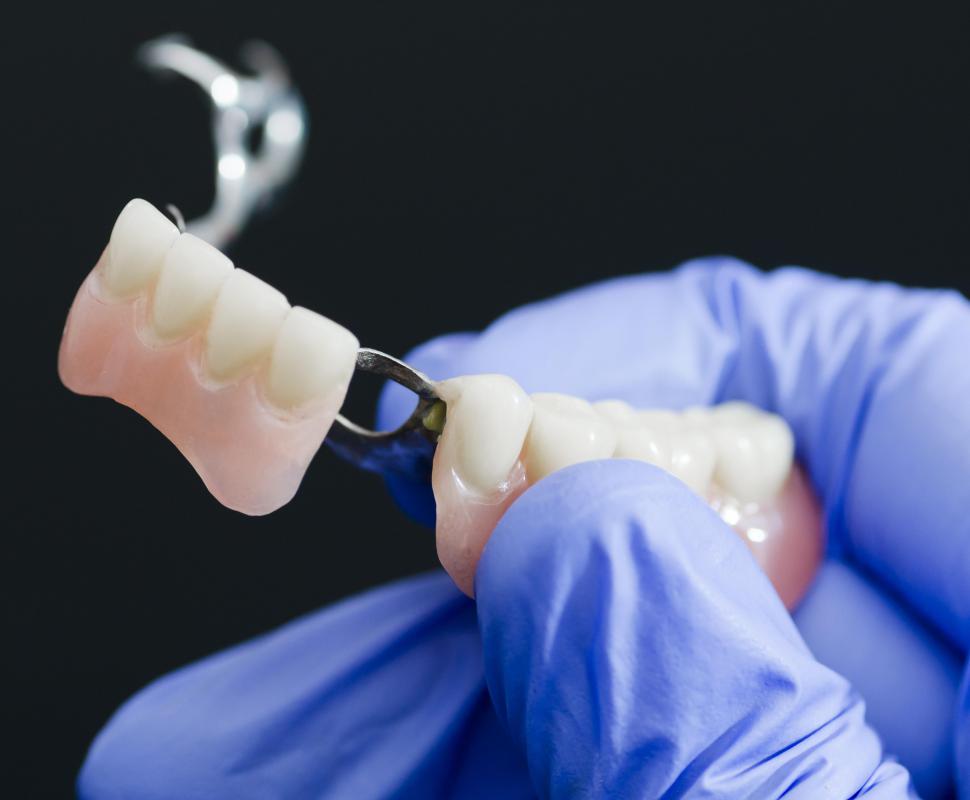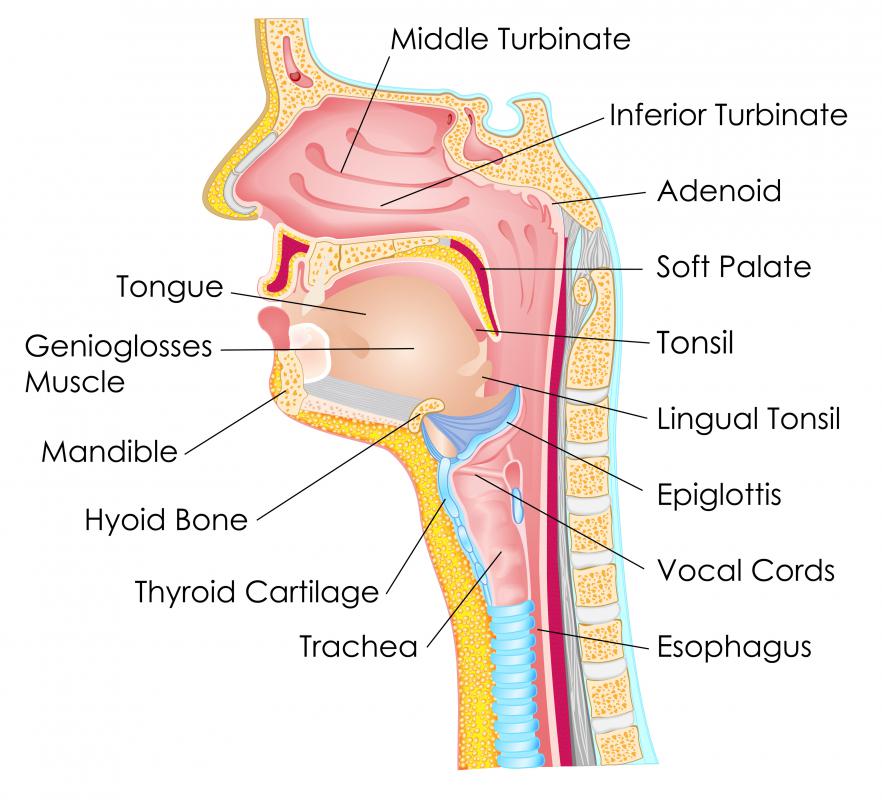At WiseGEEK, we're committed to delivering accurate, trustworthy information. Our expert-authored content is rigorously fact-checked and sourced from credible authorities. Discover how we uphold the highest standards in providing you with reliable knowledge.
What Is the Posterior Mandible?
The mandible is a large U-shaped bone that forms the lower jaw. It is the largest and strongest bone in the face, and it houses all of the lower teeth. The posterior mandible is the back part of the jaw. In the primary dentition, it consists of only the two sets of molars and the ramus; in the secondary dentition, it consists of the two sets of premolars, three sets of molars, and the ramus. The condylar process at the top of the ramus articulates with the temporal bone in the skull, creating the hinged joint of the jaw that allows the mouth to open and close.
The wider, flatter surfaces of the teeth in the posterior mandible are used primarily for chewing food. These teeth also often have wide and sometimes deep grooves on the surface. For this reason, sealants are often placed on premolars and molars in the posterior mandible. Sealants are clear, protective layers that cover the grooves so that food particles cannot get stuck inside and cause decay. This preventative measure is common, painless and typically placed only on adult teeth.

Although the mandible continues to lengthen into young adulthood, most still do not have enough room for the third set of molars. The extraction of the third molars is a common surgery for the posterior mandible. The posterior mandible also is a common site for reconstructive dental work. Posterior teeth, if they are not sealed, are more prone to cavities. If a tooth can be saved, it can be reconstructed with a porcelain crown; if it must be pulled, it can be replaced with a bridge or a dental implant.

The posterior mandible can also suffer from fractures or dislocation. A broken jaw usually results from trauma and is associated with bleeding from the mouth, pain, difficulty opening the mouth, numbness, and swelling. Depending of the severity, a jaw fracture can be treated simply by a bandage and a soft food diet. In very severe cases, the jaw must be wired shut for six to eight weeks and might need surgery.

Dislocation of the jaw occurs when the condylar process pops out of place and is no longer articulating with the temporal bone. Symptoms of dislocation include pain, difficulty speaking, a protruding jaw, feeling that teeth are not fitting together properly and pain in front of the ear that continues getting worse. Dislocated jaws can be put back into place by a dentist using the thumbs. It will then be stabilized and pain medications given. In very severe cases, surgery might be needed, especially if dislocation happens often and is unrelated to facial trauma.
AS FEATURED ON:
AS FEATURED ON:


















Discussion Comments
This article talks about dislocation of the jaw and says that surgery is sometimes needed if the jaw dislocates and it isn't because of trauma. Is this related to TMJ in anyway? What causes the popping? Do I have to worry about my jaw dislocating at some point? Totally freaked out here!
Post your comments